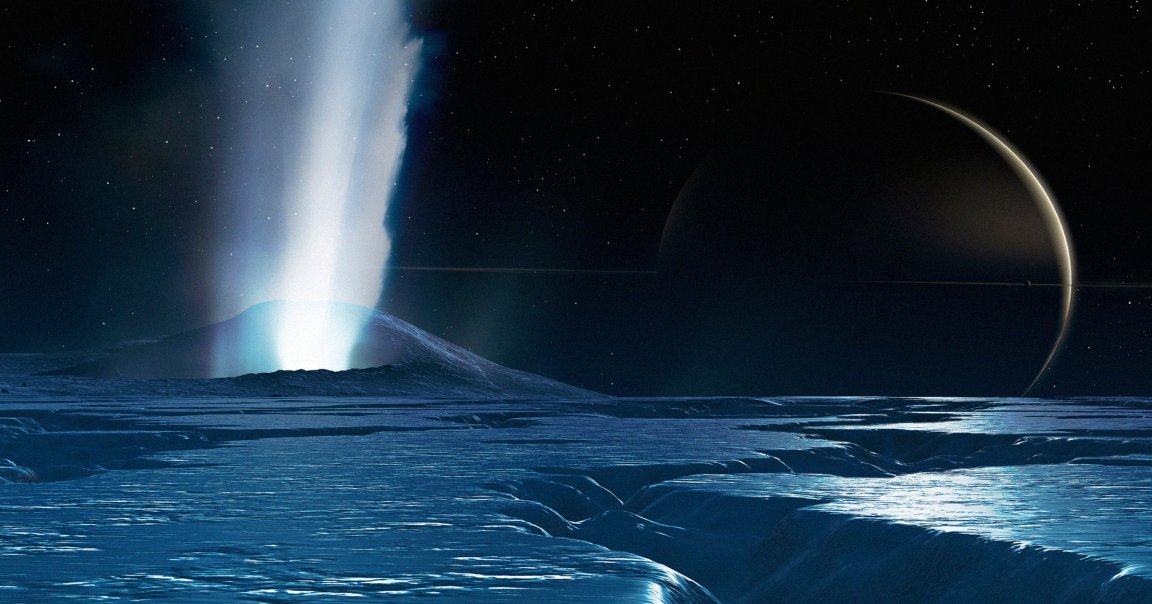
Astronomers have found that Saturn’s moon, Enceladus, is spewing out copious amounts of complex organic molecules, suggesting it’s an even more promising place to look for extraterrestrial life than previously thought.
As detailed in a new study published in the journal Nature Astronomy, researchers examined data collected by NASA and the European Space Agency’s Cassini spacecraft, which visited the tiny moon between 2005 and 2015. They found evidence that its suspected underground ocean is home to complex chemical reactions, which on Earth are closely associated with life.
The research builds on existing findings that jets of water are bursting forth from Cassini’s underground ocean, shooting ice particles straight into space, some of which find their way back onto the moon’s surface.
“Cassini was detecting samples from Enceladus all the time as it flew through Saturn’s E ring,” said lead author and Freie Universität Berlin researcher Nozair Khawaja in a statement. “We had already found many organic molecules in these ice grains, including precursors for amino acids.”
Specifically, the team examined ocean spray data collected by Cassini’s Cosmic Dust Analyzer in 2008.
“The ice grains contain not just frozen water, but also other molecules, including organics,” Nozair explained. Since these particular particles traveled fast enough — roughly 11.2 miles per second — when hitting the instrument, they didn’t “cluster,” giving the researchers a “chance to see these previously hidden signals,” per Nozair.
They found evidence that the organic molecules originated in Enceladus’ ocean, including ones never observed before, such as signs of nitrogen- and oxygen-bearing compounds, ethers, and esters.
These organic molecules are involved in the kinds of chemical reactions that are believed to have eventually led to the formation of life on Earth, making it a particularly exciting finding.
“There are many possible pathways from the organic molecules we found in the Cassini data to potentially biologically relevant compounds, which enhances the likelihood that the moon is habitable,” Nozair said.
However, we’re still far from being able to confirm there’s life on Enceladus, something that would require a standalone mission to its surface.
“There is much more in the data that we are currently exploring, so we are looking forward to finding out more in the near future,” Nozair said.
Excitingly, the ESA is considering sending a spacecraft to the moon since it “ticks all the boxes to be a habitable environment.”
“Even not finding life on Enceladus would be a huge discovery, because it raises serious questions about why life is not present in such an environment when the right conditions are there,” Nozair concluded.
More on Saturn’s moons: Scientists Puzzled by Mysterious Motion in Atmosphere of Saturn’s Moon